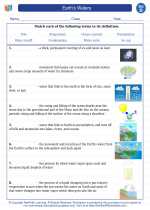Crust
The Earth's crust is the outermost layer of the Earth. It is a thin, solid shell that covers the Earth's surface.
Composition
The crust is primarily composed of solid rocks and minerals. It is made up of two types of crust: continental crust and oceanic crust.
Continental Crust
Continental crust is thicker and less dense compared to oceanic crust. It mainly consists of granite and other light-colored rocks.
Oceanic Crust
Oceanic crust is thinner and denser compared to continental crust. It is primarily composed of basalt and other dark-colored rocks.
Thickness
The thickness of the Earth's crust varies. Continental crust is generally thicker, ranging from 20 to 70 kilometers, while oceanic crust is thinner, averaging about 7 kilometers in thickness.
Functions
The crust plays a crucial role in supporting life on Earth. It provides a solid surface for the existence of landforms, such as mountains, plains, and valleys. Additionally, the crust prevents the escape of the Earth's atmosphere and provides a habitat for various organisms.
Study Guide
- What are the two types of crust?
- Describe the composition of continental crust.
- Explain the thickness variation between continental and oceanic crust.
- What role does the Earth's crust play in supporting life?
◂Science Worksheets and Study Guides Fourth Grade. Earth's Waters
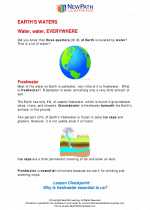
 Worksheet/Answer key
Worksheet/Answer key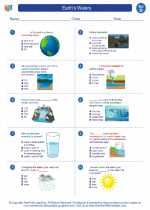
 Worksheet/Answer key
Worksheet/Answer key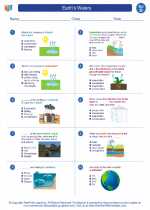
 Worksheet/Answer key
Worksheet/Answer key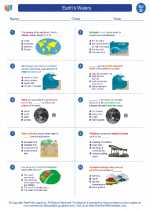
 Vocabulary/Answer key
Vocabulary/Answer key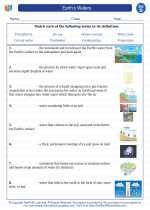
 Vocabulary/Answer key
Vocabulary/Answer key